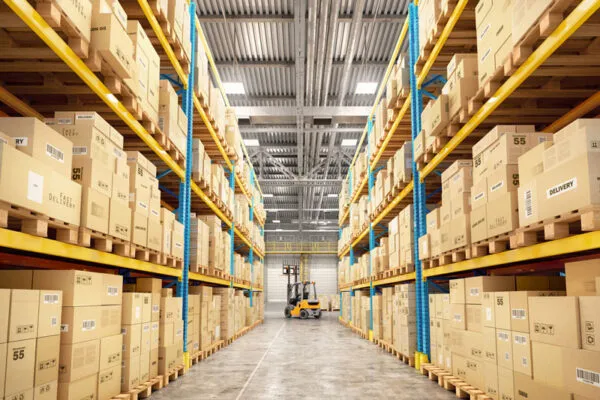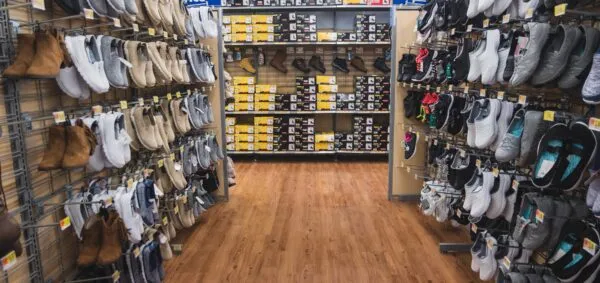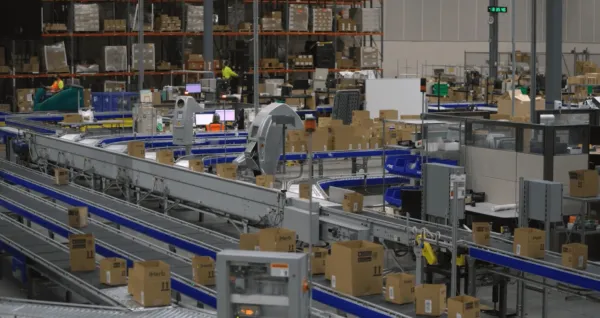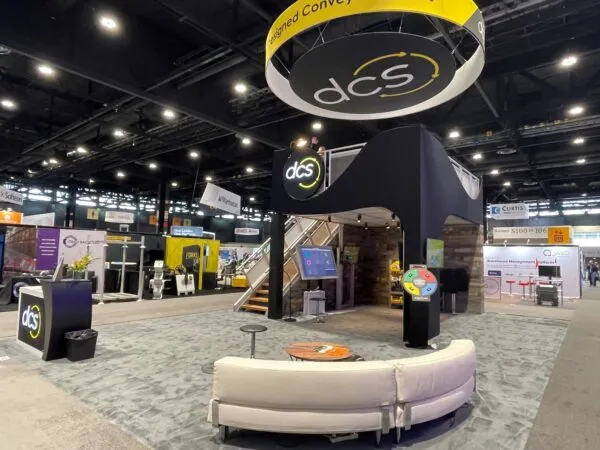This site is protected by reCAPTCHA and the Google Privacy Policy and Terms of Service apply.
Retail Distribution Center Design: The Essentials
In today’s dynamic retail environment, distribution center design is more important than ever. Whether supporting store replenishment, e-commerce fulfillment, or an omni-channel model, an optimized retail distribution center design ensures speed, accuracy, flexibility, and safety across the supply chain.
When properly planned and executed, the design of a distribution center streamlines product flow, enhances efficiency to reduce operating costs, and supports scalable growth. Leveraging expert distribution center design consulting can help retailers in every market—from big box general merchandisers to specialty categories such as electronics, department stores, housewares, or sporting goods—implement solutions that align with both business strategies and operational demands.
Key Considerations for Retail Distribution Center Design
Effective distribution center design layout is rooted in a thorough understanding of specific operational requirements. Critical factors to consider include:
1. Facility Size and Layout
Facility dimensions and layout depend on the intended function of the distribution center—whether for cross-docking, break-box storage, or high-volume e-commerce fulfillment. Facilities designed to store inventory typically require extensive racking and potential automation for vertical storage, while cross-docking centers prioritize staging areas to enable rapid outbound movement.
2. Product Type and Handling
Product characteristics heavily influence infrastructure requirements. For example, apparel distribution centers may require garment-on-hanger systems, while electronics or high-value merchandise may necessitate secure storage and specialized handling. Value-added services such as gift packaging, labeling, or kitting—and the space required to perform such tasks—must also be considered during the design phase.
3. Volume and Throughput
Projected throughput and volume inform automation and equipment choices, space allocation, and staffing models. Accurate volume forecasting based on historical data and future growth plans is essential to determine optimal storage density and picking strategies. Distribution centers supporting expanding store footprints or new product lines must be designed with scalability in mind.
4. Worker Safety and Ergonomics
Safety and ergonomics are integral to retail distribution center performance and workforce well-being. Effective design strategies include physically separating pedestrian and equipment traffic, using ergonomic workstations, and implementing optimized lighting and visibility solutions to reduce the risk of accidents and fatigue.
The Role of Automation in Optimizing Flow and Efficiency
Automation plays a key role in modern retail distribution center design, delivering improvements in operational flow, labor efficiency, and inventory accuracy.
Types of Automation
- Goods-to-Person Systems: Automated systems that deliver inventory to operators assigned to picking and packing workstations, minimizing wasted time spent traveling between pick faces and maximizing pick rates.
- Robotic Palletizing and Depalletizing: Automated, multi-axis robotic arms that stack cases and totes to build pallets for outbound shipping for store replenishment, and that remove cases from received pallets for further internal handling, storage, or cross-docking.
- Autonomous Mobile Robots (AMRs): Flexible robotic systems that move goods dynamically throughout the facility and support associates filling orders as they travel through aisles, increasing space utilization and adaptability.
- Unit Sortation: Automated systems where goods are inducted into a sortation conveyor in unit quantities and sorted to specific destinations (stores, customers, etc.). Automation provides higher accuracy over manual sortation, as well as increases productivity and reduces labor requirements. These systems can be traditional sortation (cross belt, tilt-tray, bomb bay, push-tray, activated roller, sliding shoe, etc.) or robotic solutions.
- Garment on Hanger/Pouch Sortation: Specialized, automated storage and sequencing of apparel and small goods suspended from individual hangers or pocket pouches. These systems automate unit-level storage, sortation, picking, and fulfillment of these items.
Strategic Benefits
Automated systems improve efficiency, particularly during seasonal peaks or in labor-constrained markets. Additionally, they offer better capacity utilization by maximizing the unused vertical space overhead, enhance inventory and fulfillment accuracy, and improve inventory security by preventing unauthorized access to high-value items. Systems designed for operations handling high stock keeping unit (SKU) counts—such as high-density automated storage and retrieval systems (AS/RS) or cube-based storage solutions—are particularly well-suited for e-commerce and omni-channel operations with diverse product assortments. Their integrated control software, combined with the facility’s overarching warehouse management system (WMS), ensures higher levels of inventory and order fulfillment accuracy, eliminating mispicks and waste.
Safety Considerations in Retail Distribution Center Design
Safety is a foundational element of every distribution center design layout. As facilities become more automated and multi-functional, potential hazards must be addressed early in the design process.
Common Hazards and Mitigation Strategies
- Forklift and Vehicle Movement: Separating employees from automation and vehicle traffic with physical barriers, bollards, and protective guardrails minimizes the risk of an accidental collision.
- Ergonomic Strain: Adjustable-height workstations, operator lifts, anti-fatigue floor mats, work assist devices (such as lift tables, vacuum lifters, and workstation cranes), and other ergonomic solutions reduce the risk of injuries caused by awkward reaching, stretching, bending, lifting, pushing, pulling, and other repetitive stress movements.
- Blind Spots and Aisle Congestion: Efficient layout planning—such as creating pick aisles in racking that are accessible only by personnel and replenished from behind in vehicle-only aisles—and enhanced lighting improve visibility and reduce travel hazards.
- Unauthorized Access to Automated Zones: Safety interlocks that automatically shut down equipment when breached, designated access zones, and maintenance-only areas prevent personnel from entering active automation areas.
These design principles contribute to a safer, more efficient work environment and are essential components of a comprehensive retail distribution center design.
The Benefits of Working with an Independent Distribution Center Design Consultant
Retailers who partner with independent distribution center design consultants and systems integrators gain specialized expertise, objective insights, and access to best-of-breed automation technologies from a range of supplier brands. Leveraging these unbiased resources can significantly enhance the success of new or reconfigured retail distribution facilities.
Advantages of Distribution Center Consulting and Integration Partnerships
- Industry Perspective: Consultants with experience across multiple retail sectors apply proven strategies tailored to unique operational models.
- Integrated Execution: Collaborations between consulting firms and system integrators—such as Waller Consulting and Designed Conveyor Systems (DCS)—ensure continuity from concept development to full implementation.
- Focused Delivery: External partners focus exclusively on project success, avoiding the distractions that can arise from managing concurrent internal operations.
Through these partnerships, businesses benefit from deep experience in system design, workflow optimization, and facility safety—delivering a tailored solution that balances performance with long-term scalability.
Engage Waller Consulting for a More Efficient Retail DC
The foundation of high-performing retail distribution center design lies in optimizing product flow, operational efficiency, and workplace safety. Effective retail distribution center design accounts for product variety, throughput volumes, automation opportunities, and worker ergonomics—ensuring that all elements work together to support business objectives.
With the support of expert distribution center design consulting, retailers can define clear requirements, evaluate strategic options, and implement tailored solutions that support current demands and future growth.
For more information about how Waller Consulting and Designed Conveyor Systems design and implement retail distribution center projects, connect with us. We look forward to transforming your retail operations with a high-performing, scalable solution.
